While Namaqualand gets all the publicity, the spring flowers of the KwaZulu-Natal Midlands grasslands are an absolute delight for those who don’t follow the crowds.
Only one in six plant species in grassland is actually a grass, with most of the perennial plants living for many years – re-sprouting annually, rather than seeding. This means that transformation of grassland by ploughing is irreversible.
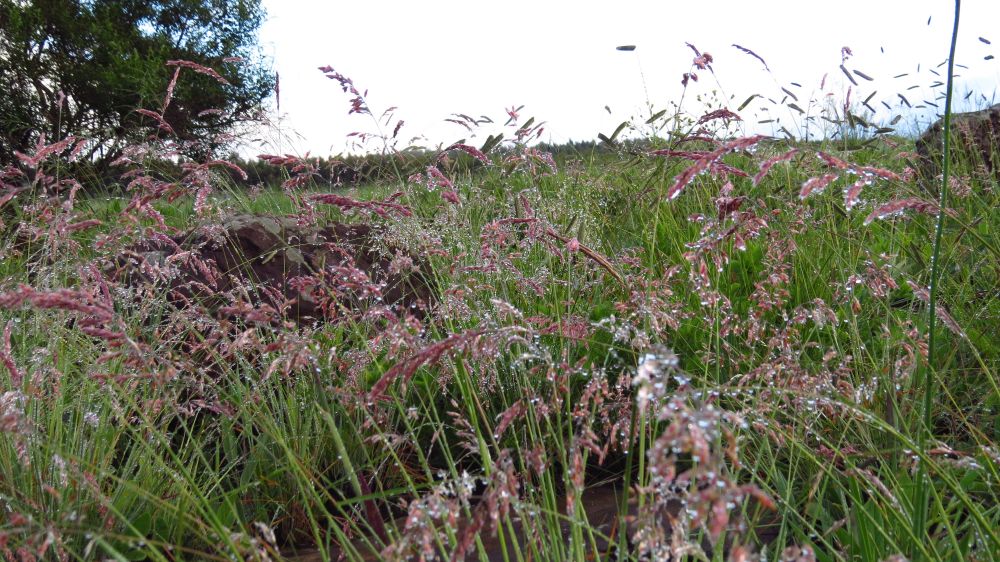
First to pop up are often the Fire Lilies. Cyrthanthus contractus and Cyrtanthus tuckii. They are easier to spot in burnt areas, but they do still flower in the long unburnt grass.
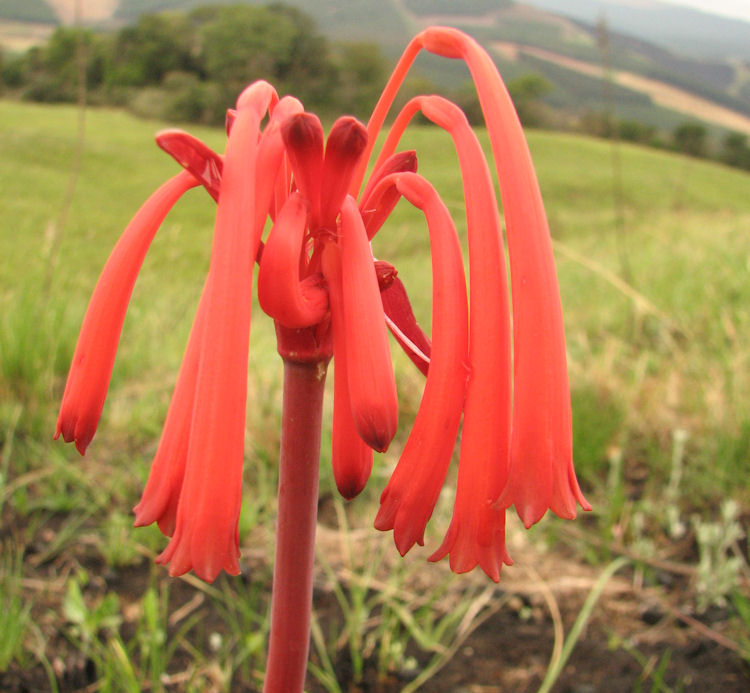
In common with many of our grassland plants, Eriosema have a large, woody underground root system – up to 5m. 36 species occur in South Africa, with four in the KZN Midlands, including Eriosema kraussiana – which has silvery stems covered in silky hairs that set off the pale yellow flowers perfectly. The pods which form at the end of the flowering season are hairy too. It grows in clumps of up to 35cm tall.
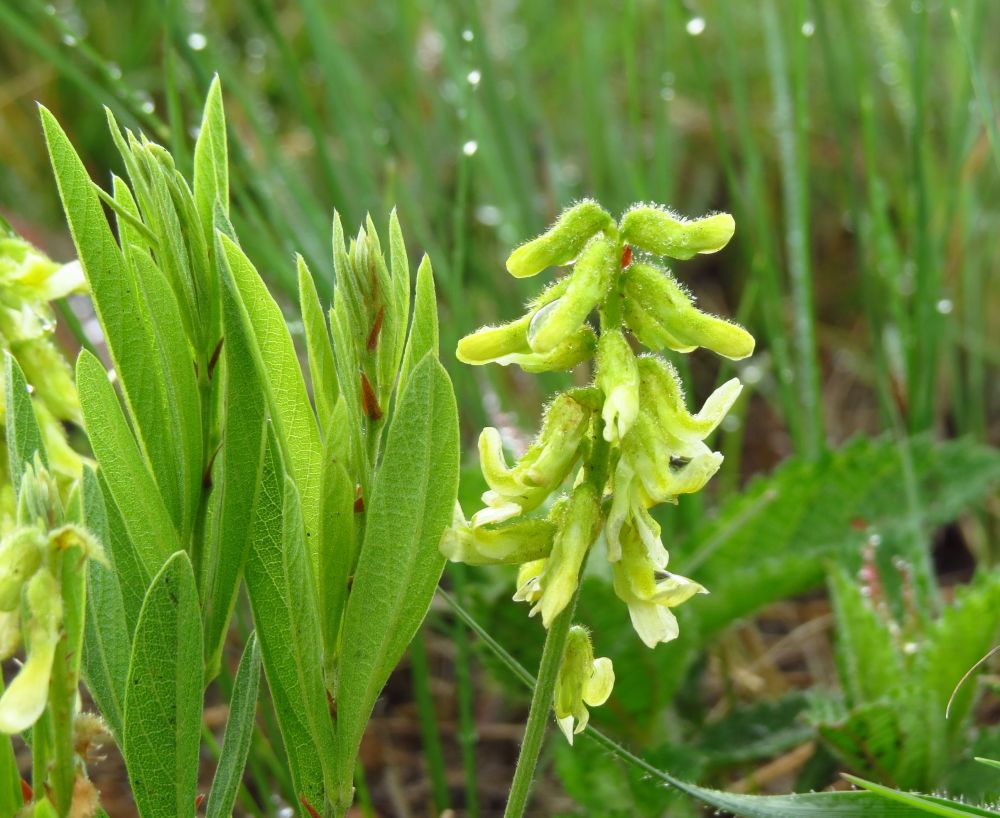
Scarlet Eriosema (Eriosema distinctum) forms patches of orange-red in our grasslands right up into the ‘Berg. Cattle don’t like eating them, so they are common even in over grazed areas. The trailing stems cover rocks and the flowers are held above the leaves on short hairy stems. Large, rough leaves are tri-foliate and have prominent veins underneath.

Another common early spring flower is Ledobouria. 15 species are found in the summer rainfall areas of South Africa with a variety of spotted, textured, striped and coloured leaves in different sizes. The small flowers are usually pink or purplish, although some species have green flowers. The bulb is eaten by porcupines and in some species the leaves are grazed too. Pollination is thought to be by social bees, and seed dispersal is principally by water – seed is washed away from where it was released by the mother plant to germinate nearby.
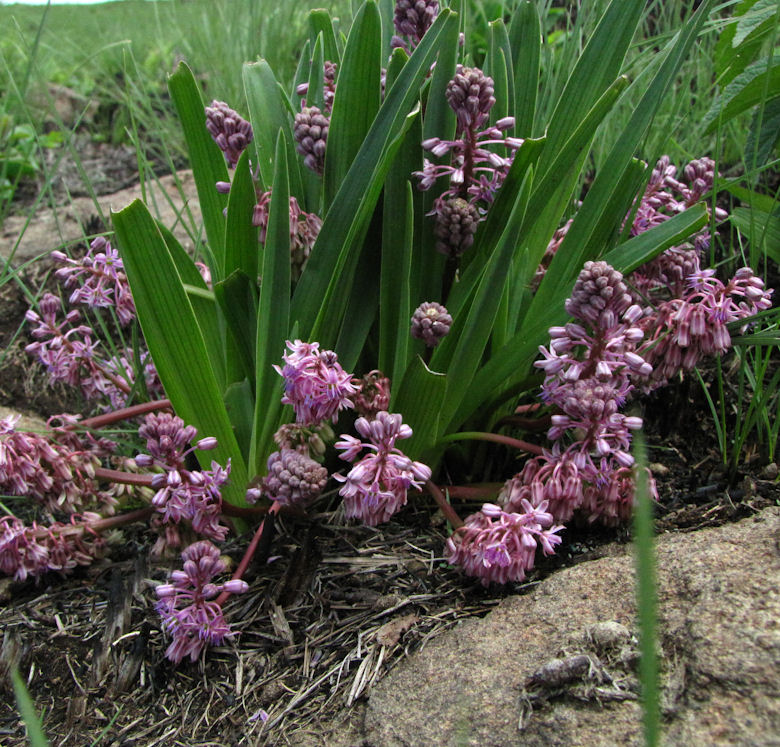
Acalypha penduncularis is commonly known as Brooms and Brushes which refers to the very different flowers on the male and female plant. The male flowers are red and white, clustered on a slender spike while the female flowers are a spidery puff of red elongated stigmas.
![]()
It is easy to spot and very common in Midlands grasslands, causing confusion to amateur botanists no doubt, with the two different flowers. The bright green nettle-like leaves are toothed, slightly hairy and clustered close to the ground on multiple stems.
![]()
Pink Ground-bells or Wild Penstemon, Graderia scabra, grows up to 60 cm tall in grassland. The leaves are toothed and hairy and the flowers a deep pink or even reddish, occasionally white.
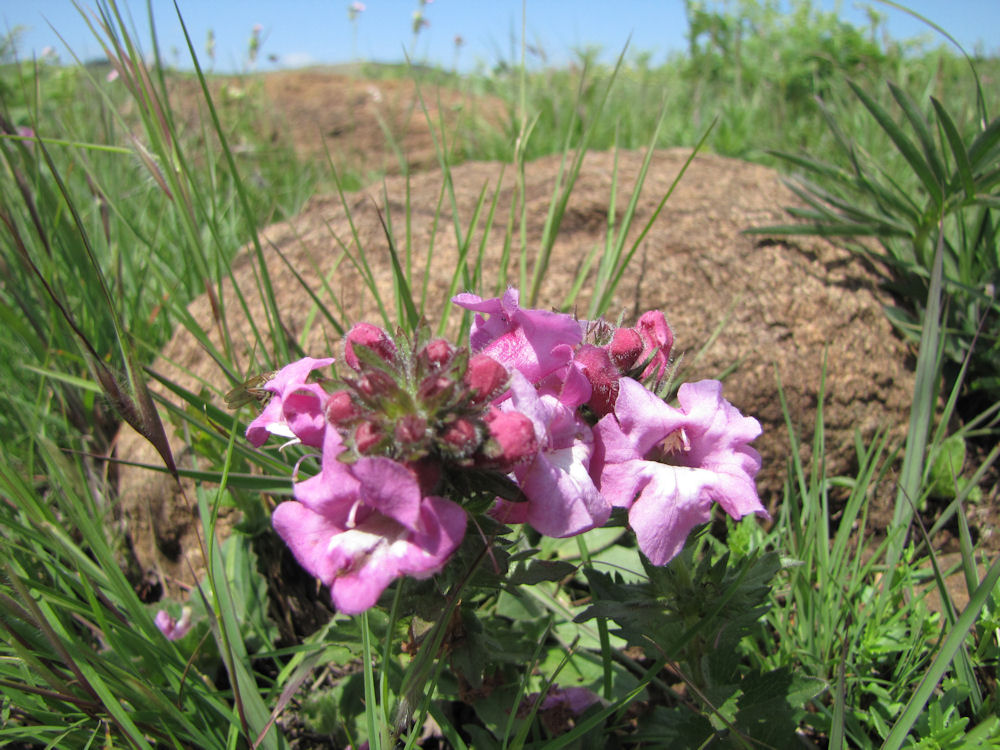
Sweetly scented Kouhautia amatymbica is common in disturbed areas, with flowers held in a loose inflorescence that waves in the breeze.
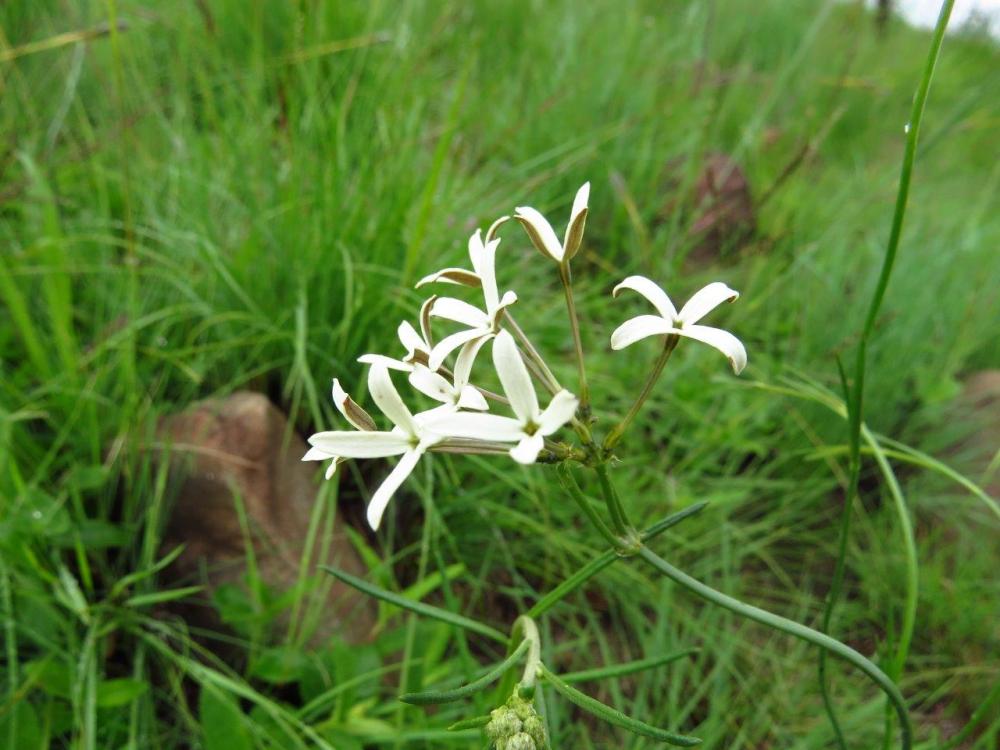
Cat’s whiskers – Becium obovatum – attracts Blues butterflies to the very pale mauve or white frilly flowers.
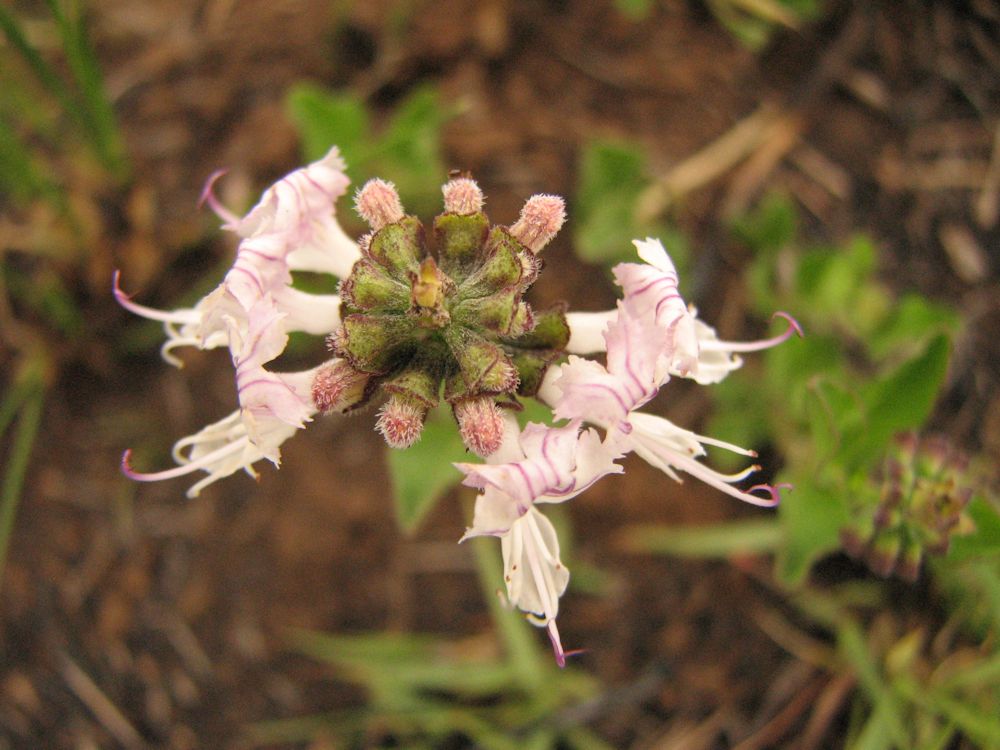
First, silvery balls appear on the stalks of Vernonia hirsuta, the Quilted-leaved Vernonia in early spring, then they burst into bright purple fluffy flowers. A real celebration of sunshine and rain! The colourful magenta (occasionally pink) flower heads are made up of many little flowers clustered tightly together, as is common for all members of the Daisy family. Vernonia hirsuta can grow quite tall in the grasslands and occurs in a variety of habitats – from hot rocky outcrops to semi-shaded forest margins. Vernonia natalensis has has thin elongate leaves rather than broad quilted ones.
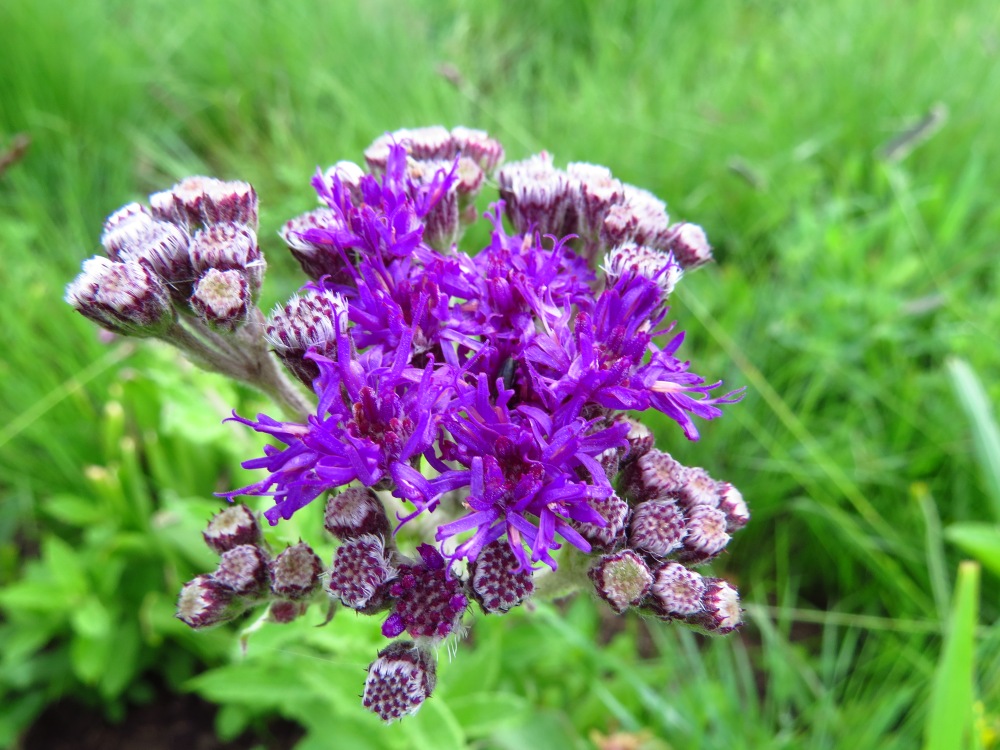
The pretty bell-shaped flowers of Wahlenbergia (part of the Campanulaceae or Canterbury Bell family) vary from mauve to very pale blue or even white, with each flower lasting a few days. The long flower stalks often droop at the top while the flowers are still in bud, but straighten up as the flowers open, dancing in the breeze.
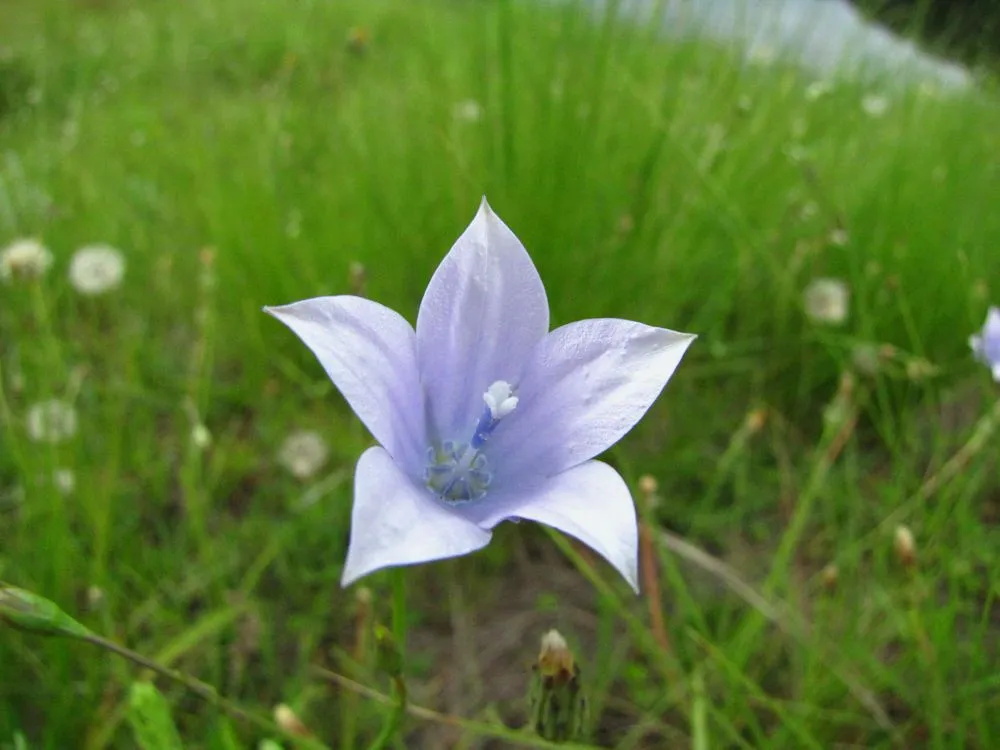
The leaves and flowers of Pelargonium luridium (Storks bill or Waving Pelargonium) are very variable although the plant is easily recognisable waving in the grassland. Inflorescences reach up to 60cm tall in summer before the plant dies back in winter. Flowers can be pink, white or cream and the basal leaves deeply divided (like a stag horn) or shallowly lobed (like an ordinary scented Pelargonuium). It is hairy all over.
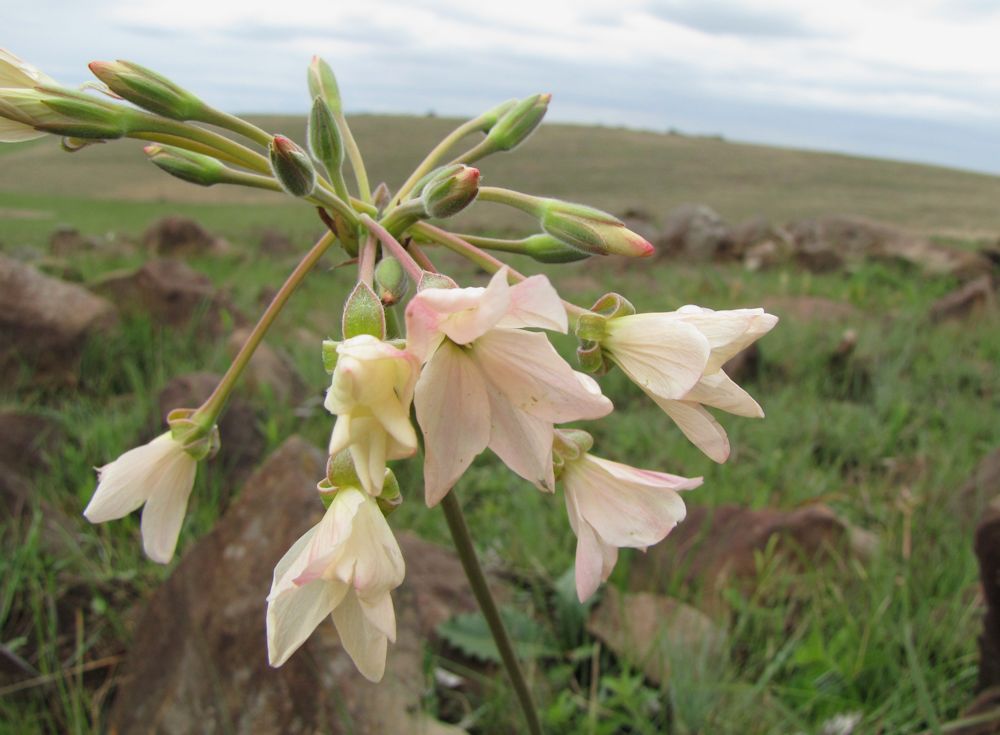
Large colonies of Pentanisia prunelloides in full bloom colour hillsides a beautiful blue. The plants are dormant during winter, with new leaves and flowers emerging from the woody rootstock in spring to flower for a few months. The large underground root mass enables this plant to survive drought, fires and trampling by livestock. The tubular flowers are pollinated by long tongued moths and butterflies.

All these plants are common along road verges, the banks of the uMngeni River and Symmonds Stream in Howick, on Beacon Hill, in Umgeni Valley, on Swartkop in Sweetwaters, in the Mpophomeni hills and Nature Reserves and grasslands across the Midlands. Go for a walk!
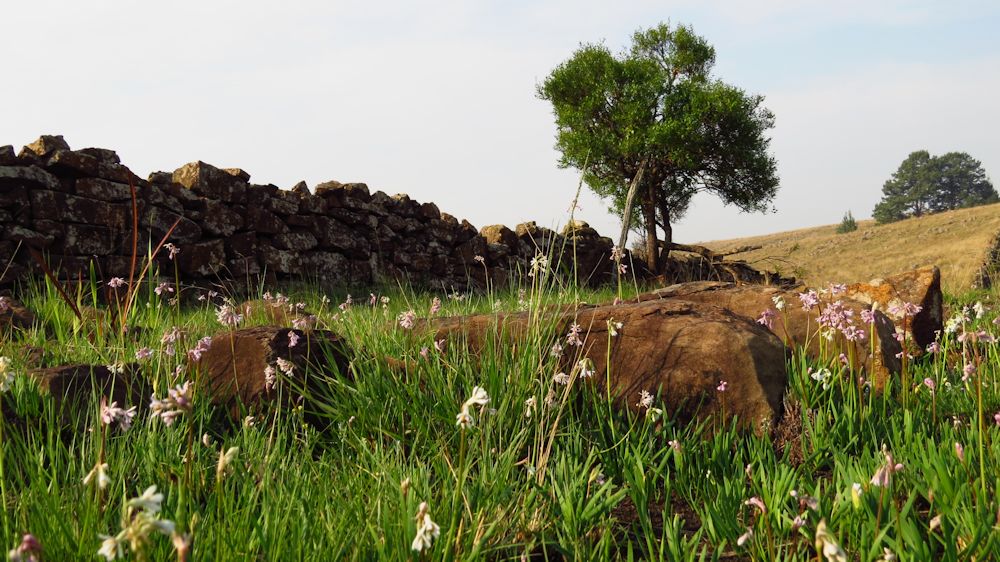
Thanks for documenting this and the cheerful blog.
LikeLike
A pleasure Peter. Trust you are exploring many flower filled grasslands this spring.
LikeLike